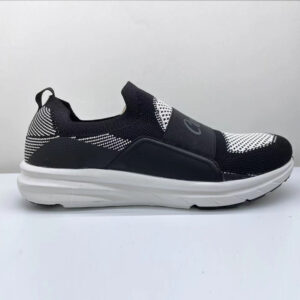Yes, there are environmental considerations associated with using a PP spunmelt machine for manufacturing PP spunbond fabric.
Here are some key environmental factors to consider:
Energy Consumption: PP spunmelt machines require energy for various operations, including heating, extrusion, and machine movement. High energy consumption can contribute to greenhouse gas emissions and environmental impact. When choosing a machine, consider energy-efficient models that optimize energy usage and reduce carbon footprint. Look for features such as energy-saving modes, efficient heating systems, and advanced control systems that minimize energy waste.
Raw Material Usage: PP spunmelt machines use polypropylene (PP) resin as the primary raw material. The production of PP resin involves extracting and processing fossil fuels. Consider the environmental impact associated with the extraction and production of PP resin, as well as the use of virgin or recycled PP resin. Using recycled PP resin can help reduce the demand for new raw material extraction and lower the carbon footprint.
Waste Generation and Management: PP spunmelt machines generate waste during the production process, such as trimmings, offcuts, and rejected fabric. Efficient waste management practices, such as recycling, reusing, or repurposing the waste materials, can minimize the environmental impact. Consider implementing waste reduction strategies and working with recycling facilities to handle and recycle the generated waste effectively.
Emissions and Air Quality: PP spunmelt machines may emit certain pollutants and volatile organic compounds (VOCs) during operation, particularly during the heating and curing processes. These emissions can contribute to air pollution and impact air quality. Ensure that the machine meets relevant emission standards and consider implementing emission control measures such as air filtration systems or emission treatment technologies.
Water Usage: While PP spunmelt machines do not typically consume large amounts of water during the manufacturing process, there may be water usage associated with cooling systems or cleaning processes. Implement water conservation practices and consider using water-efficient technologies to minimize water consumption and wastewater generation.
Compliance with Environmental Standards: Ensure that the PP spunmelt machine and the manufactured fabric comply with relevant environmental regulations and standards. These may include emissions standards, waste management regulations, wholesale shoes manufacturers and hazardous substance restrictions. Compliance with standards such as ISO 14001 (environmental management systems) and Oeko-Tex certification can demonstrate a commitment to environmental sustainability.
Product Lifecycle: Consider the environmental impact of the PP spunbond fabric throughout its lifecycle, including its use, disposal, and potential for recycling or reuse. Design the fabric with end-of-life considerations in mind, such as recyclability or biodegradability, to minimize environmental impact.
By considering these environmental factors and implementing sustainable practices, such as energy efficiency, waste reduction, and responsible raw material sourcing, the environmental impact of using a PP spunmelt machine can be minimized.
What are some tips for breaking in new shoes to make them more comfortable?
Breaking in new shoes can help make them more comfortable and reduce the likelihood of discomfort or blisters.
Here are some tips to help you break in your new shoes:
Wear Them Around the House: Start by wearing your new shoes for short periods of time indoors, such as around the house. This allows your feet to gradually adjust to the shoes without putting excessive strain on them.
Use Socks or Cushioned Inserts: Wear socks or use cushioned inserts to provide extra padding and reduce friction between your feet and the shoes. This can help prevent blisters and provide additional comfort.
Adjust Lacing or Straps: Experiment with different lacing techniques or strap adjustments to find the most comfortable fit. Loosen or tighten the laces as needed to alleviate any pressure points or tightness.
Stretch Them: If your shoes feel too tight in certain areas, you can try stretching them. Use techniques like wearing thick socks and applying gentle heat with a hairdryer, or using a shoe stretcher or a professional shoe stretching service. Be cautious not to overstretch the shoes, as it may cause damage.
Gradually Increase Wear Time: Slowly increase the duration of wearing your new shoes over time. Start with short periods and gradually extend the duration as your feet become accustomed to the shoes.
Alternate with Other Shoes: Give your feet some rest by alternating your new shoes with other comfortable footwear. This allows your feet to recover and reduces the constant pressure on the same areas.
Address Discomfort: If you experience specific areas of discomfort or rubbing, you can apply moleskin pads or bandages to protect those areas and provide cushioning. Alternatively, you can use specialized blister prevention products, such as blister cushions or gel pads.
Remember, breaking in shoes takes time, and the process can vary depending on the shoe type and individual feet. It’s important to listen to your body and give yourself enough time to adjust to the new shoes. If persistent discomfort or pain occurs, it’s advisable to consult a podiatrist or footwear professional for further assistance.
